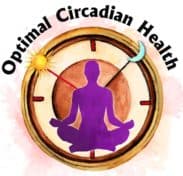Hashimoto’s disease is the pop star drama queen of autoimmune conditions, with a flair for constant ups, downs and unpredictable plot twists of thyroid function.
While conventional medicine relegates Hashimoto’s to a simple hypothyroidism requiring synthetic thyroid hormone replacement, this approach barely scratches the surface of the complex biochemical bedlam happening behind the scenes of this thyroid dysfunction.
That’s why this article is going to cover everything that you need to know about the conventional vs functional medicine approaches to Hashimoto’s, thyroid hormone therapy, and optimal thyroid function.
Buckle up, this will be a comprehensive deep dive for anyone who is a practitioner or a thyroid patient.
Hopefully this brings some much needed relief to those dealing with Hashimoto’s with the daily cycle of new tribulations, revelations and (occasionally) triumphs that keep sufferers waiting for the next wave of symptoms.

Through it all, well-meaning endocrinologists frequently prescribe medication that may work well for some. But, for others higher and higher doses of medication to put out the fires, rarely investigating what’s actually fueling the flames. For many, this approach provides as much lasting relief as using an aloe vera plant to extinguish a four-alarm blaze.
While functional medicine offers an alternative paradigm for understanding and managing Hashimoto’s, it is not without its own plot complications. When harnessed appropriately under the guidance of a skilled practitioner, functional medicine has the potential to transform Hashimoto’s into a feel-good Hallmark film. However, in the wrong hands, it may become more of a wallet biopsy.

In this article, we’ll explore Hashimoto’s management through the lens of functional medicine and whether it’s truly the hero for Hashimoto patients – or just another money pit in the fight to be healthy.
The truth, as always, lies somewhere in between. But first, a bit more context on the dastardly diva that is Hashimoto’s and why conventional care may be missing the mark.
The Conventional Treatment of Hashimoto’s
Let’s first cover the conventional approach from by starting with thyroid labs
Diagnosis of Hashimoto’s – Thyroid stimulating hormone
Hashimoto’s disease is diagnosed primarily through blood tests measuring thyroid hormone and antibody levels. The most well-known test is thyroid stimulating hormone, which typically ranges from 0.5 to 4.5 mIU/L in healthy adults.
This simply measures how much hormone is coming from your pituitary gland to your thyroid gland. In short, your pituitary gland secretes this substance to tell your thyroid to produce thyroid hormone.

In Hashimoto’s patients, thyroid stimulating hormone levels may fluctuate outside of normal ranges (higher TSH levels indicate an underfunctioning thyroid) as the immune system attacks your thyroid gland.
However, TSH alone does not confirm Hashimoto’s and additional testing is needed for thyroid hormones.
Diagnosis of Hashimoto’s – Thyroid hormone
Free thyroxine (Free T4) and free triiodothyronine (Free T3 which is your active thyroid hormone; these together are known as your “thyroid hormones”) measure available thyroid hormones and levels below normal ranges may indicate Hashimoto’s related hypothyroidism and low thyroid function. Overall, your thyroid hormones are the most important marker of thyroid function.
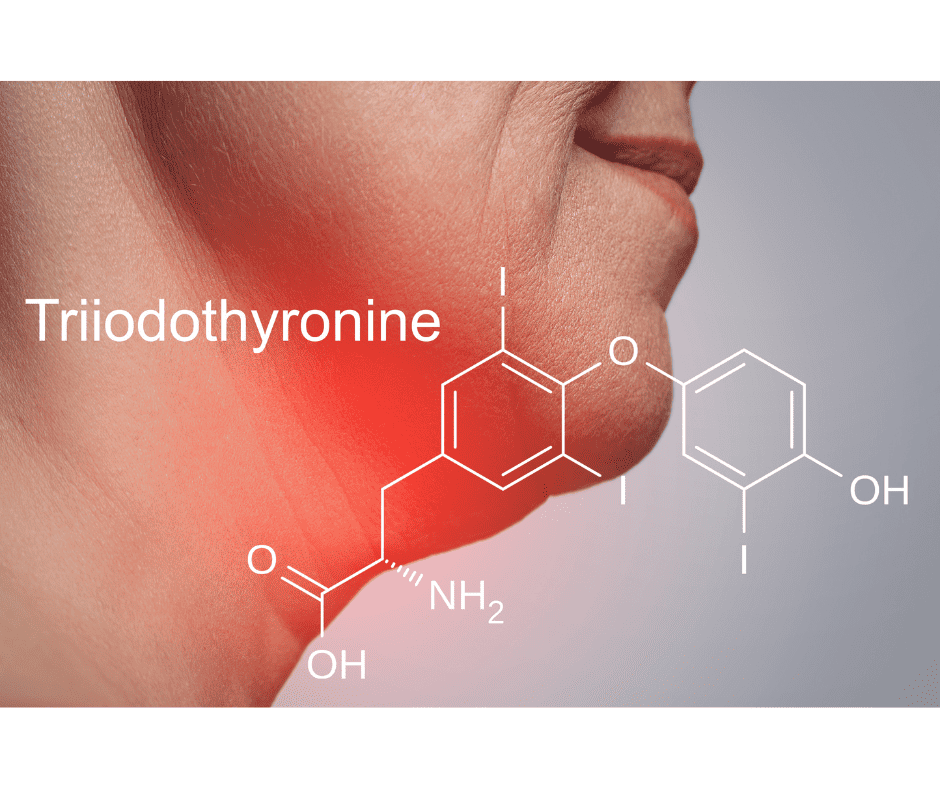
Diagnosis of Hashimoto’s – Autoantibodies
Beyond TSH, you need to test for thyroid antibodies to ascertain your thyroid condition.
Thyroid peroxidase antibodies (TPO Ab) — Thyroid peroxidase antibody levels greater than 35 IU/mL confirm an autoimmune thyroid condition. Up to 95% of Hashimoto’s patients test positive for Thyroid peroxidase antibodies.
Thyroglobulin antibodies (TG Ab) — TG Ab levels over 40 IU/mL indicate Hashimoto’s. About 65% of patients show elevated TG antibodies.
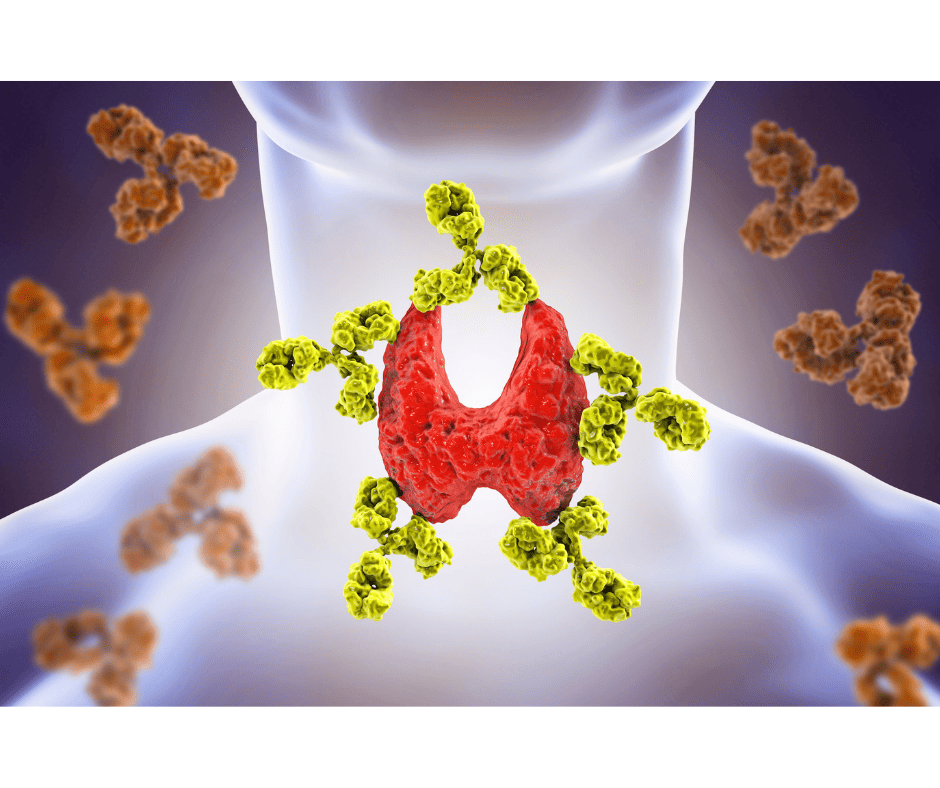
Mirror, mirror on the wall… what’s the best Hashimoto’s test of them all?
According to an extensive review in Frontiers in Endocrinology, “serum TPO Ab and TG Ab are considered the hallmarks of (Hashimoto’s disease) and are detected in up to 95% and 65% of patients, respectively.” (McAninch EA, et al, 2020)
In short, measuring TSH alone may detect hypothyroidism but does not confirm Hashimoto’s autoimmunity and the underlying cause of symptoms. You must also look at antibody levels!
Conventional Hashimoto’s Treatment
Endocrinologists have one major tool: thyroid hormone replacement with thyroid medication (a.k.a levothyroxine/Synthroid).

And then, treatment is all about adjusting until the right “therapeutic” dosage is achieved based on TSH levels alone.
These doctors march patients through an algorithmic process so regimented it would make any self-respecting drill sergeant proud, scribbling prescriptions with the meticulous yet oblivious persistence of a dot matrix printer.
For patients, this treatment strategy feels as cutting edge as a flip phone (I own a flip phone so don’t judge me).
In other words, treatment accomplishes the basic job of addressing their hypothyroid symptoms but leaves them with a nagging sense that the specialist managing their “chronic and progressive” autoimmune disease seems almost entirely incurious about its origins.
While levothyroxine has its place and many do benefit from the T4-only approach under the right circumstances, for others it may elicit side effects ranging from exhaustion to eye spasms, raising the question: do the benefits really outweigh the costs of this tool?
Does the Conventional Approach Stop the Autoimmune Process?
While thyroid hormone replacement with levothyroxine may effectively address hypothyroid symptoms in Hashimoto’s patients, it does not halt the underlying autoimmune thyroiditis. According to studies, antibody levels and lymphocytic infiltration continue to progress for most patients on levothyroxine monotherapy. (Tomer Y. et al, 2001;ą* Quadbeck B. et al, 2004). As reviewed in Mead et al. (2017), “current (conventional) treatment approaches are unable to specifically target the autoimmune component of Hashimoto’s disease.” Without immunomodulating interventions, the chronic T cell-mediated attack on thyroid tissue continues, often leading to fluctuations in hormone and antibody levels, alterated TSH set points, and a higher risk of eventual hypothyroidism (Tomer Y. et al, 2003).
Bottomline, conventional medicine may cover up the root cause of the issue… but how do you actually calm your immune system down?

Could it be functional medicine?
Let’s see…
How Hashimoto’s Functional Medicine Approach Begins (1000 words)
While conventional medicine sees Hashimoto’s as a basic case of hypothyroidism to be managed with synthetic hormone replacement, functional medicine perceives the drama unfolding behind the scenes—namely, an autoimmune spectacular that’d put any telenovela to shame.
Rather than repeatedly adjusting the volume on symptoms, functional medicine traces the plot back to its origins in a misguided script written by inflammation, gut and thyroid issues, toxins and nutrient deficiencies. By addressing root causes, functional medicine aims to resolve the drama at its source, quieting the autoimmune response and optimizing thyroid health naturally.

But, is it enough and how exactly does Functional medicine pull this off?
Checking Thyroid Function with Blood, Poop, and Spit
Functional medicine takes an in-depth, high-definition view of Hashimoto’s using advanced laboratory testing. According to Kaliora et al (2019), “modern functional medicine approaches…emphasize a more comprehensive diagnosis…using stool and urine organic acids, salivary hormone tests, cytological studies, and genomics in order to determine underlying triggers.”
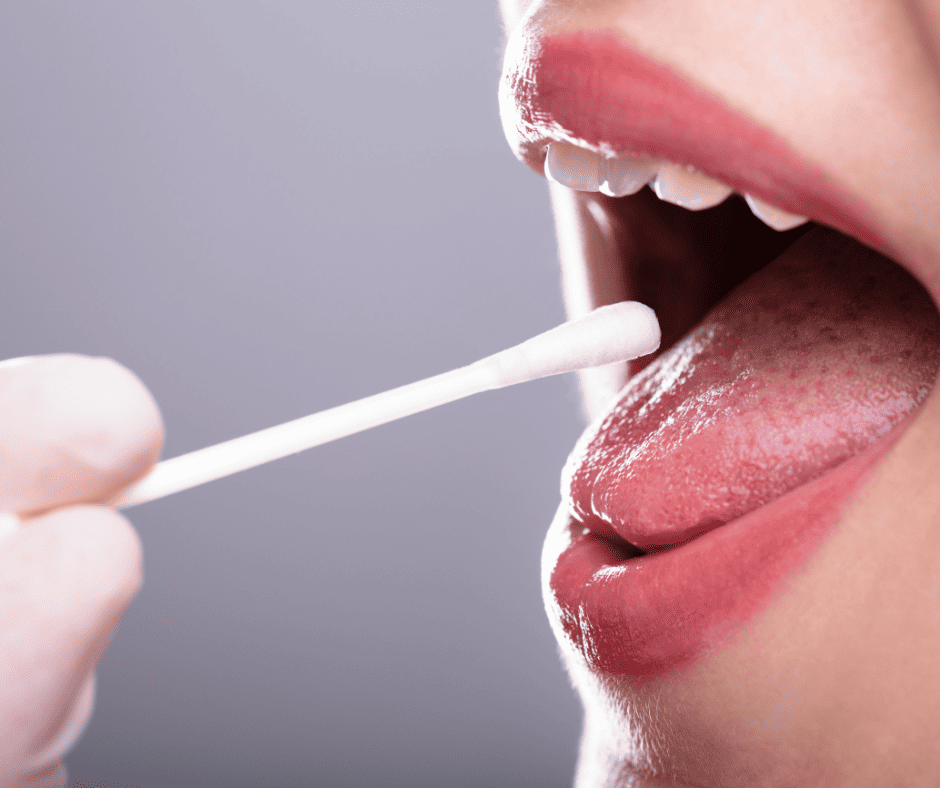
Blood tests look beyond just TSH and antibodies, let’s break this down
Nutrient Testing
Many nutrients are off-kilter in Hashimoto’s (Grasberger E, 2019) and functional medicine aims to address these. And, this list is… not short:
- Vitamin D: Important for immune regulation and low in Hashimoto’s. Target range is typically 40-60 ng/mL.
- Vitamin B12: Essential for thyroid hormone production and metabolism. Look for levels of 500 pg/mL or higher.
- Folate: Works with B12 and often depleted. Aim for levels of 15 ng/mL or more.
- Zinc: Mineral important for thyroid health and T4 to T3 conversion. Look for levels of at least 80-110 mcg/dL.
- Selenium: Antioxidant mineral vital for thyroid hormone synthesis and metabolism. Levels of 120 to 150 mcg/L are considered optimal.
- Iron: Necessary for proper thyroid hormone function. For those with Hashimoto’s, levels of 50 to 80 mcg/dL are best. Both high and low levels need to be addressed.
- Magnesium: Important cofactor for hundreds of enzymes and optimal thyroid health. Levels of 2.0 mg/dL or higher are considered healthy.
- Iodine: Essential for thyroid hormone production but excess iodine may trigger Hashimoto’s flare-ups. Urinary iodine levels of 100 to 300 mcg/L are considered adequate. Iodine needs close monitoring.
- Glutathione: Key antioxidant produced in the body. Levels below 3.0 μmol/L may indicate excess oxidative stress that needs support.
- Omega 3 index: Measures levels of anti-inflammatory fatty acids DHA and EPA. Aim for an index of 8% or higher for proper immune balance and thyroid support
If you thought that was comprehensive just wait for the next 4 lists of bullet points
Salivary Hormone Panels
Salivary hormone panels reveal imbalances in cortisol, the anti-inflammatory hormone DHEA and melatonin which regulates the circadian rhythm — all of which influence the immune system and thyroid (Grasberger and Bell 2019).
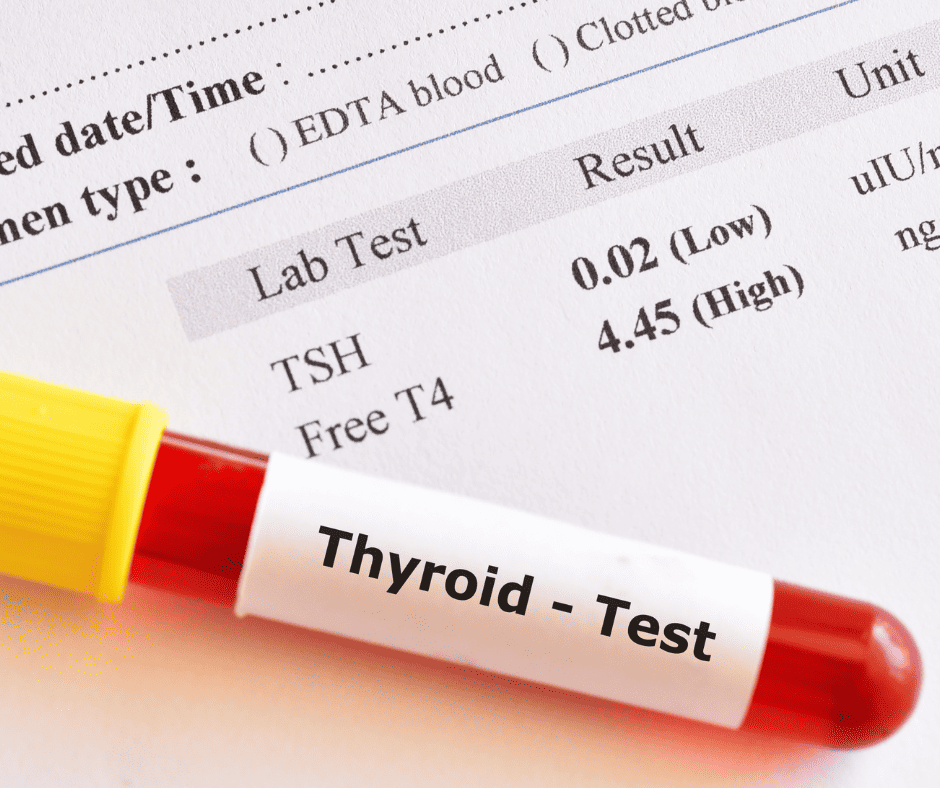
Here’s typically what can be investigated with salivary hormone panels:
Salivary Cortisol
Measures levels of the stress hormone cortisol at 4 points – waking, midday, evening and bedtime. In Hashimoto’s, cortisol is often low in the morning but high at night (dysregulated diurnal pattern). Optimal range – Waking: 10-15 ng/mL, Midday: 3-7 ng/mL, Evening: 1.5-4 ng/mL, Bedtime: 0.5-2 ng/mL.
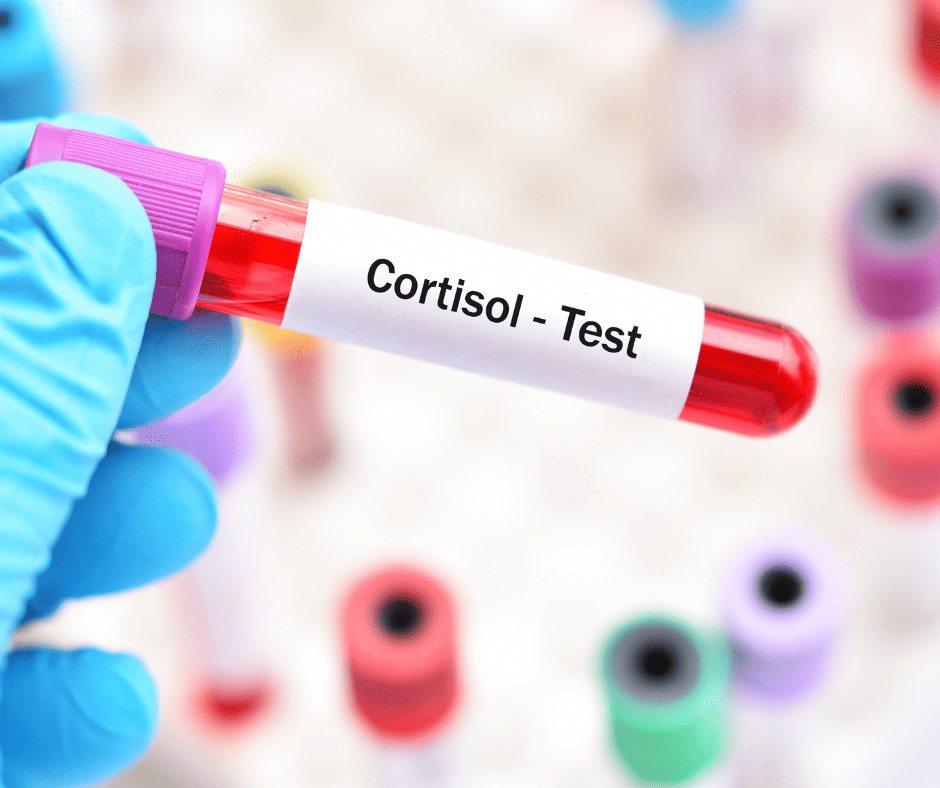
Salivary DHEA
Monitors levels of the anti-inflammatory hormone DHEA. DHEA is typically low in Hashimoto’s patients. Healthy range for women: 1.5-15 ng/mL; for men: 4.5-25 ng/mL.

Salivary Estradiol
Assesses estrogen levels which may be imbalanced in women with Hashimoto’s. Follicular phase: 2-6 pg/mL, Luteal phase: 6-20 pg/mL, Perimenopausal: 15-80 pg/mL, Menopausal: 0-30 pg/mL.
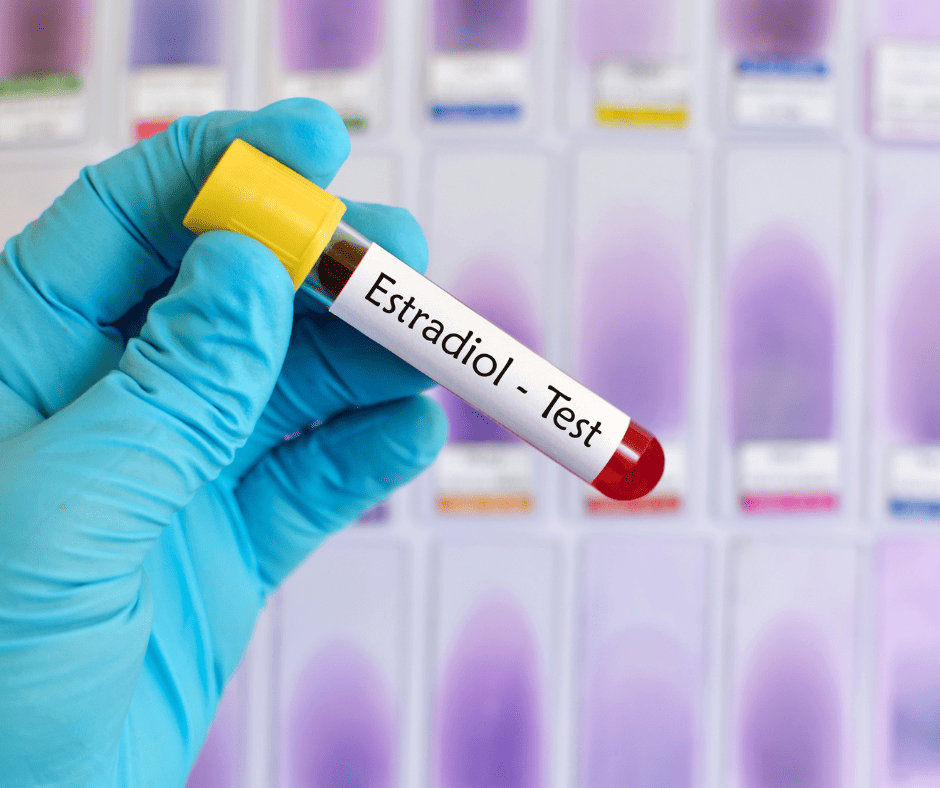
Progesterone
Measures progesterone levels which are often low in women with Hashimoto’s, especially relative to high estrogen. Follicular phase: 75-270 pg/mL, Luteal phase: 5-20 ng/mL, Perimenopausal: 150-1,500 pg/mL.

Secretory IgA
Monitors levels of secretory IgA, an antibody found in saliva that acts as the body’s first line of defense against pathogens. Low secretory IgA indicates impaired gut immunity and increased risk of intestinal permeability. Healthy range: 70-320 mg/dL.
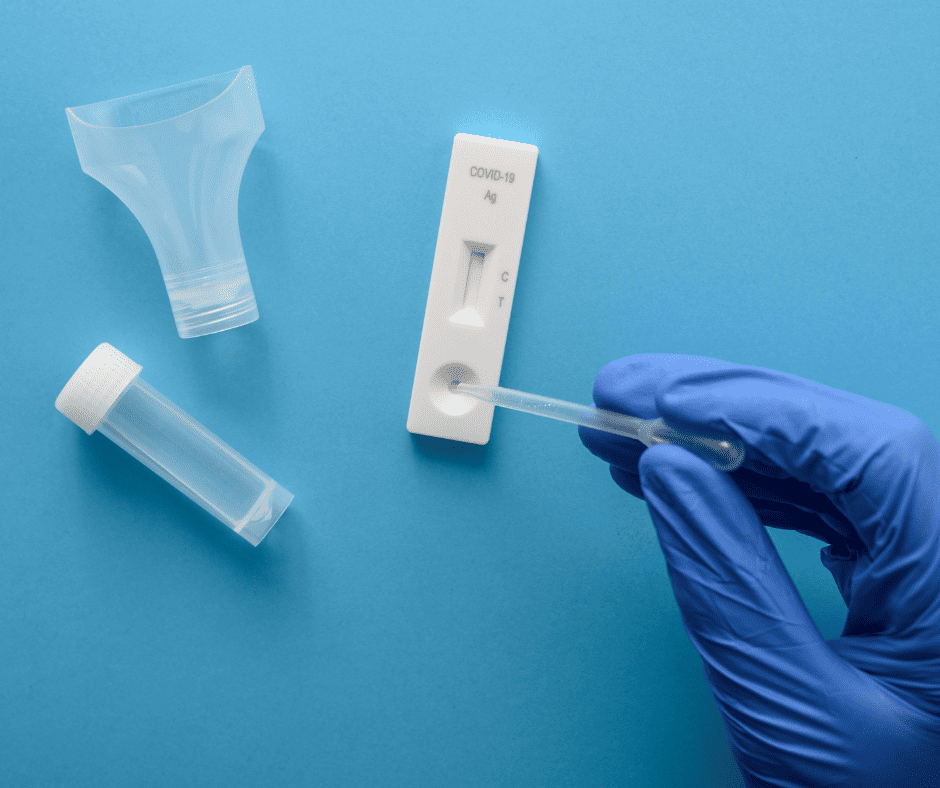
Testosterone
Assesses testosterone levels in women that may be imbalanced in Hashimoto’s. Healthy premenopausal range: 15-70 pg/mL; postmenopausal range 5-25 pg/mL. High testosterone is associated with increased conversion of T4 to reverse T3.

Salivary vs. Blood Testing
While blood serum testing has been the standard for monitoring hormone levels, salivary testing is gaining acceptance as it can provide a more functionally relevant assessment of free hormone concentrations found biologically active in the body. According to Pacitti et al. (2013), saliva testing is a “non-invasive, stress-free and convenient medium for the assessment of free steroid hormone levels”, but may be limited by potential contaminants in saliva and differences in saliva production between individuals. Blood testing, on the other hand, requires venipuncture and measures total hormone levels, but results may be affected by serum binding proteins and provide limited information about hormonal activity in tissues.

Stool Analysis (Poop Testing)
Since gut abnormalities like yeast overgrowth and SIBO, leaky gut and inflammation, and are frequently abnormal in Hashimoto’s patients, testing for these is also typically indicated (Grasberger E, 2019; Tomer Y et al, 2007).
Here we go (part 3… I warned you this was going to be comprehensive):
Comprehensive Stool Analysis
Checks for infections like parasites, yeast overgrowth, SIBO and leaky gut. In Hashimoto’s, you may see high yeast (especially Candida), Gram negative bacteria, and low SCFAs.
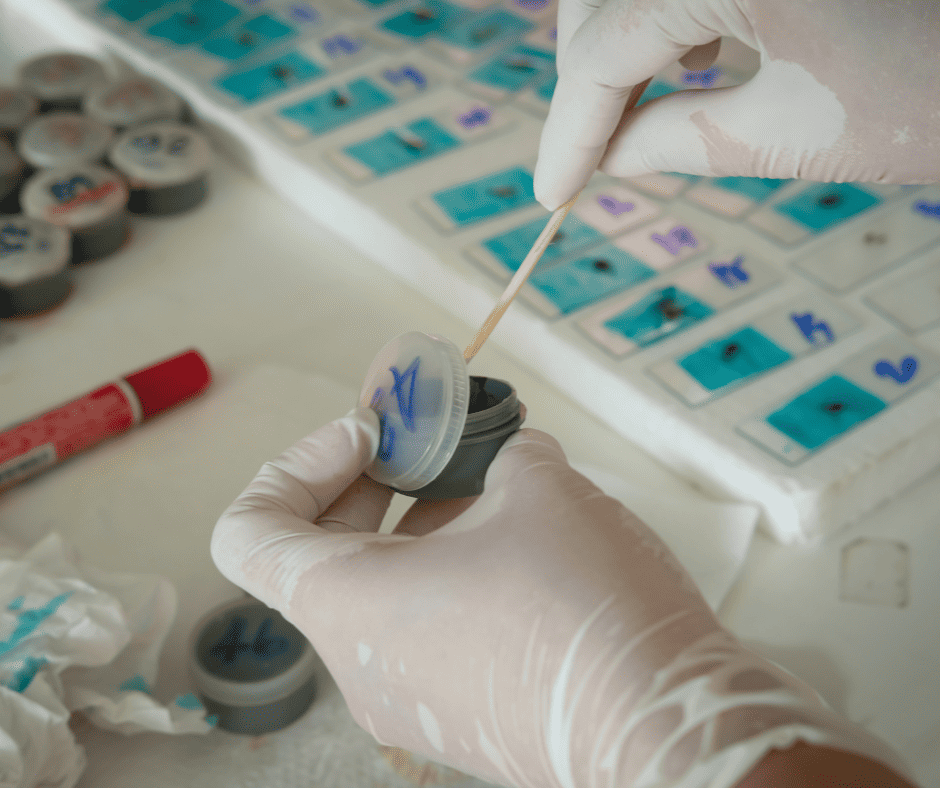
Organic Acids Test
Assesses for intestinal yeast and bacterial overgrowth, leaky gut and malabsorption issues that often underlie Hashimoto’s. May see high citramalic acid (indicating yeast), high benzoic acid (bacterial imbalance), low short chain fatty acids.

Giardia and Cryptosporidium ELISA
Checks specifically for these parasitic infections which can trigger autoimmunity. Any positive result is abnormal and requires treatment.

Ova and Parasites
Screens stool sample for presence of larger parasites. Multiple species or high levels of certain parasites like Blastocystis hominis are associated with Hashimoto’s.

Secretory IgA
Measures levels of IgA, an antibody found in stool that acts as the first line of defense against pathogens in the gut. Low secretory IgA (<30 mcg/g stool) indicates gut immune deficiency and leaky gut, common in Hashimoto’s.
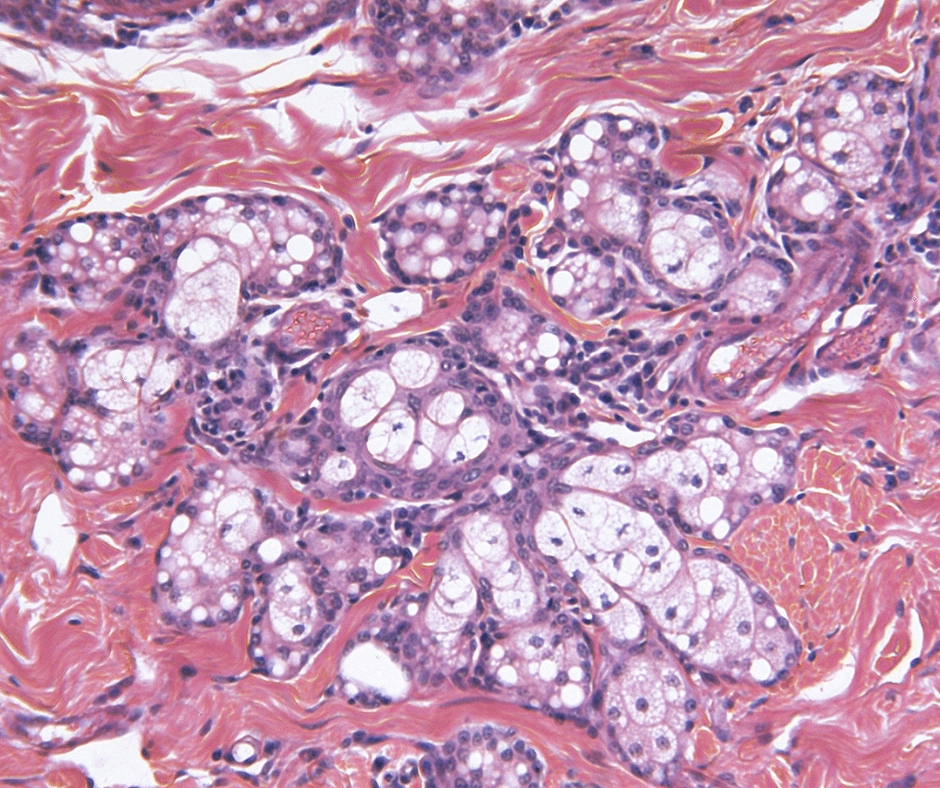
Anti-gliadin 33
Checks for gluten intolerance which is linked to Hashimoto’s. Results >20 U/mL indicate gluten sensitivity which may activate the autoimmune response.

Calprotectin
Assesses level of inflammation in the intestines, which is often elevated in Hashimoto’s patients. Range of 50 to 120 mcg/g stool is normal. Levels above 120-200 mcg/g indicate active inflammation and gut barrier issues.
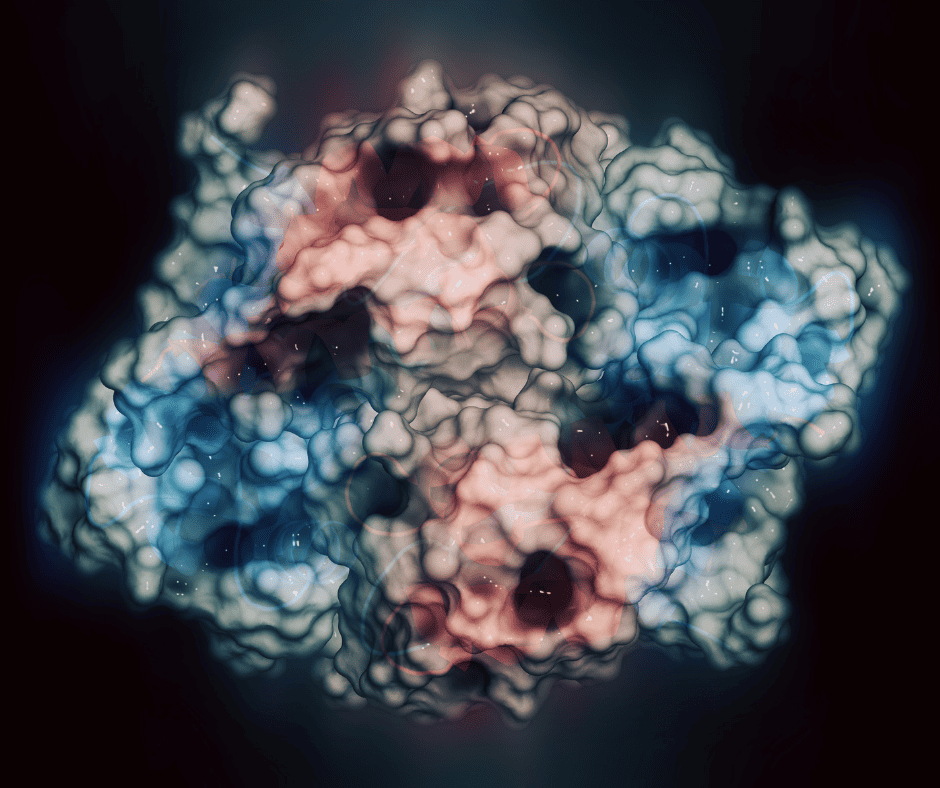
Fecal Pancreatic Elastase 1
Measures function of the pancreas and levels of digestive enzymes. Low elastase (<200 mcg/g) indicates maldigestion of nutrients, which leads to immune dysregulation and may trigger Hashimoto’s flare-ups. Supplementing with digestive enzymes is often required.

Food sensitivity testing
When our immune system is cranky in the case of Hashimoto’s, then it’s often sensitive to many other proteins as well. Hence, food sensitivity testing also identifies antibodies against different foods that may be contributing to an overactive immune system (Tomer Y et al, 2007).

If you’re tired of reading about all these tests… then imagine actually getting all these tests done.
Here’s what the functional medicine practitioner is looking for with food sensitivities:
IgG Antibody Assessment
Measures IgG antibodies against up to 200 foods. Common sensitivities include gluten, dairy, eggs, nuts, nightshades. Indicates increased gut permeability and inflammation. Elimination diet recommended.
IgA, IgM and IgG4 Assessment
Assesses IgA, IgM and IgG4 antibodies against selected foods. Sensitivities to gluten, dairy and soy are most common in Hashimoto’s. Suggests immune reaction that can activate autoimmunity. Elimination of reactive foods required to reduce inflammation.
MRT Leap Challenge Test
Measures immune response to up to 150 foods during a brief re-exposure after elimination diet. Gluten, eggs, and dairy are frequently problematic. Highly sensitive test that can identify even small/moderate food reactions that trigger symptoms. Elimination and rotation diet often needed.
IgG Wheat/Gluten Sensitivity
Specifically assesses sensitivity to wheat proteins including gluten. A positive result indicates gluten is activating the immune system and damaging intestinal lining. Strict gluten-free diet essential for reducing inflammation and autoimmunity.

Testing Overload?
Now, that is a LOT of testing.

Usually when I have a client that comes with all these tests, I pour myself a nice glass of water and prepare myself for 50-70 pages.
Is all this testing necessary?
According to Drs. Kharrazian and Pick (Kharrazian D, 2020), “by assessing patterns of abnormalities across these functional tests…effective treatment programs can be developed to remove obstacles preventing healing and remission.” In addition to outlining mechanisms underlying symptoms, these tests provide clarifying data that lets doctors formulate a precision treatment strategy tailored to each patient’s biochemical individuality and needs (Myers, A, 2020).
While such testing is considered controversial and not FDA-approved, proponents argue that nutritional, hormonal and inflammatory biomarkers provide an important window into physiological processes not captured in standard blood work alone (Myers, A, 2020; Kaliora S et al., 2019).
But what do I think? I figured since you’ve read we’re friends at this point
What I like about all this testing
Not a whole lot to be honest.
Now, I think it’s great to give more information that leads to action steps that allow for more opportunities for healing.
In fact, this will help some people fully recover.
However, I’m the person who gets people who are still lab testing with a functional medicine doctor five years down the road.
When we take a mitochondrial approach to Hashimoto’s, you don’t really need any testing because you already know what’s wrong.

What I hate about all this testing
I view testing like car diagnostics.
Let’s imagine you have two mechanics.
Mechanic A wants to run $5000 in diagnostics to see what’s wrong.
Mechanic B just needs to know if you heard a “hum” or “thud” when driving 45 miles per hour.
Which one do you think is closer to the answer?
When you have a more intricate understanding of human physiology, all this testing is rather unnecessary.
Sure, it may reveal more data about what’s going on.
But, at the end of the day these issues are merely downstream of the bigger issues in your mitochondria.
But, I digress.
Back to what you came here for fellow-health-seeker.
So, what does functional medicine do with all this information?
Key Areas of Focus for Functional Medicine Hashimoto’s Treatment
If you thought the testing was exhaustive, wait till you see the approach!
Functional medicine takes an multi-(multi-multi-)pronged approach to overcoming the complex web of triggers underlying Hashimoto’s autoimmunity by addressing gut health, adrenal function, inflammation, nutrient deficiencies and environmental factors.
Healing leaky gut and gut dysbiosis
While conventional medicine dismisses “leaky gut” as alternative nonsense, functional medicine recognizes intestinal permeability and gut flora imbalances as key drivers of autoimmunity in Hashimoto’s. According to Vojdani and Vojdani (2020), “increased permeability in Hashimoto’s allows large molecules to cross the gut barrier, activating an immune reaction that can exacerbate thyroid inflammation.” Rather than relying on pills to mask symptoms, functional medicine approaches the gut as ground zero – working to repair its delicate lining, evict troublesome squatters from its microbiome and optimize digestive function from the inside out.
Armed with lab results, a functional “gut makeover” plan is crafted targeting pathogens and microbial diversity through antimicrobial herbs, probiotics with strains clinically proven effective for Hashimoto’s like Bifidobacterium and Lactobacillus, and a diet low in sugar and high in prebiotic fibers that feeds good gut bugs. Jackson et al. (2019) found such pre/probiotic interventions in Hashimoto’s can “help repair gut barrier integrity, decrease Th1 expression, and reduce autoantibody levels.”

Simultaneously decreasing gut inflammation and irritation is key. Kaliora et al. (2019) recommend removing reactive foods through an elimination diet which for many means going gluten-free and dairy-free – especially since as Izabella Wentz (2017) wittily observes, “gluten is for leaky gut as cheese is for a mousetrap.” Anti-inflammatory nutrients like curcumin, omega 3’s and aloe vera also promote gut lining repair according to Myers (2020).
With time and the right regimen of diet, nutrients, botanicals and probiotics tailored to each patient’s needs, even long-standing leaky gut and dysbiosis underlying Hashimoto’s can be dramatically improved using a functional medicine model. By tuning up gut function at its source, rebalancing microbiota and reducing inflammation drivers, the autoimmune flame wreaking havoc on thyroid regulation starts to flicker and fade.
But, inflammation exists outside of the gut (hello brain fog!)… so that’s why the next step is to…
Reducing inflammation
While inflammation runs amok in Hashimoto’s, conventional treatment sticks to symptom relief alone – doing little to douse the smoldering flames fanning thyroid dysfunction and autoimmunity from within. Functional medicine, on the other hand, makes inflammation public enemy number one, taking aim at it from multiple angles simultaneously based on the proven premise that defusing inflammation defuses disease.
First on the hit list are problematic foods acting as kindling for the fire. Myers (2020) asserts that “eliminating reactive and inflammatory foods is imperative when you have Hashimoto’s” – nothing sparks inflammation quite like gluten, dairy, sugar and co. An anti-inflammatory diet low in culinary arsonists and high in soothing agents like turmeric and ginger helps starve the flames.

Key nutrients that support inflammation taming and regulate immune function are also liberally supplied. According to Perrone et al. (2019), “several micronutrients play an immunomodulatory role in Hashimoto’s…like selenium, iron, zinc, omega 3 fatty acids and vitamins D and E.” A meta-analysis by González-Darder et al. (2019) found over 50% of Hashimoto’s patients were deficient in vitamin D, a nutrient with potent anti-inflammatory effects. Supplementing to achieve optimal levels, especially in winter or when sunlight is scarce, is considered critical for reining in inflammation.
Botanicals represent another battalion in the fight against inflammation, with substances like curcumin, boswellia and quercetin uniquely suited to address the roots of Hashimoto’s per Kaliora et al. (2019). Myers (2020) succinctly states “Herbs like turmeric help reduce inflammation and support an underactive thyroid gland naturally without the side effects of medications.”
Lifestyle changes round out an integrated anti-inflammatory strategy. Managing stress through exercise, meditation and adequate sleep works wonders since chronic inflammation and adrenal issues go together like matches and kindling. Reducing toxic exposures that spark an inflammatory cascade wherever possible also helps achieve a long term ceasefire.
While the inflammatory inferno of Hashimoto’s may rage for years, stoked unconsciously through diet and lifestyle, the good news is there are many functional medicine fire extinguishers capable of smothering the flames for good over time. By dousing triggers, optimizing nutrition, using targeted supplements and leading an overall anti-inflammatory lifestyle, Hashimoto’s remission may not continue to be such an elusive dream. Where there’s a will to fight inflammation, there’s a way to overcome autoimmunity.
Correcting nutritional deficiencies
Hashimoto’s is a condition of lack – lack of thyroid hormone, lack of nutrients essential for health – yet the standard of care focuses solely on thyroid medications and on synthetic hormone replacement. According to Wentz (2017), “nutritional deficiencies are very common in people with Hashimoto’s hypothyroidism but are often overlooked.”
Functional medicine, on the other hand, embraces a “supplement first” approach, reasoning that replenishing deficiencies of biologically active agents the body is intrinsically familiar with helps repair broken function, while drugs simply mask symptoms temporarily.
(We’ll talk about my take on the “supplement first” approach)

Kaliora et al. (2019) assert that “correcting micronutrient deficiencies is fundamental for restoring euthyroidism” in Hashimoto’s.
Key nutrients commonly lacking that support low thyroid function and immune health include selenium, zinc, omega 3’s, vitamin D, magnesium and B vitamins. A meta-analysis by Guastamacchia et al. (2012) found over half of Hashimoto’s patients were deficient in selenium, a trace element essential for healthy thyroid hormone metabolism and glutathione production. Supplementing with 200 mcg of l-selenomethionine helps facilitate conversion of T4 to T3 while quenching oxidative stress.
Vitamin D also plays an important role in immune modulation and euthyroid function. With many Hashimoto’s patients testing deficient according to Guastamacchia et al. (2012), adequate sun exposure and/or vitamin D3 supplements are vital for taming the autoimmune attack. Zinc, a mineral crucial for TSH and T4 balance, and magnesium, a cofactor in over 300 enzymatic reactions, are also commonly depleted but easily replenished through supplementation under guidance of a skilled functional physician.
An astute clinician considers synergies between nutrients in developing a comprehensive plan. For example, iron and vitamin C together support thyroid hormone synthesis, while vitamin B12 and folate are co-dependent yet often lacking hand in hand. Westhovens et al. (2018) found that “combating nutrient deficiencies with diet and supplements may help mitigate symptoms and support wellbeing” in those with Hashimoto’s.
While drugs have their place in managing autoimmune diseases and Hashimoto’s, they fail to address the metabolic shortages compromising health over the long run. Functional medicine operates from the understanding that nutritional deficiencies sow the seeds of pathology, so replenishing the essentials that fuel thyroid and whole body function represents the most strategic first step towards wellness – not an afterthought. By methodically correcting micronutrient insufficiencies, the body is empowered to operate as intended, reestablishing molecular harmony and paving the path for remission.
But how much of each supplement?
I don’t think I can tell you that without getting an interesting letter or phone call from some regulatory body.
Also, even if I could tell you, you always need to consider the whole person. So, dosages will vary.
Detoxifying the body
While toxins pour into the environment and bodies of those with Hashimoto’s at an alarming rate, conventional medicine remains largely unconcerned with their impact or removal. According to Wentz (2017), “environmental toxins and chemicals …damage our bodies and trigger autoimmunity”. Functional medicine acknowledges bioaccumulation of heavy metals and other toxicants as major contributors to disease that must be systematically cleared.
The detox process begins by identifying unwanted molecular occupants through urine, stool and blood testing. High levels of mercury, arsenic or lead may be detected, as well as pesticides and other endocrine disrupting chemicals. Once problematics are pinpointed, safe and comprehensive elimination is planned in phases considering biotransformation genetics and nutritional status.
Strategies span from eliminating food toxins like BPA and processed fare to infrared sauna for sweating out heavy metals. Myers (2020) advocates for “cleansing diets, detox supplements and herbs like cilantro, rosemary and burdock root to help remove toxins from your tissues and body.” Cilantro in particular is prized for mobilizing mercury, lead and aluminum from hard to reach spaces between fat cells and neurons.

Baths and coffee enemas aid detox through liver support and drainage of toxins through the gut wall and portal vein according to Myers (2020). Yance (2020) explains how coffee enemas “stimulate bile flow to help transport toxins…increasing glutathione production” – a compound critical for detoxification in Hashimoto’s.
Nutrients like turmeric, resveratrol and N-Acetyl Cysteine boost production of detox enzymes depleted in Hashimoto’s such as glutathione peroxidase. Minerals including zinc and selenium activate natural chelation, binding and elimination of toxicants from the body. According to Guastamacchia et al. (2012), “antioxidant therapy could prevent the possible damage caused by chronic autoimmune inflammation” in Hashimoto’s.
While environmental illness represents an inconvenient truth, the good news is detox need not be dangerous or complicated using a functional model. By gently identifying and eliminating toxins through nutritional support, herbs, hydrotherapy and lifestyle changes over time, health can be reclaimed in an intelligent, compassionate way. Every toxin cleared brings the body into better balance, brighter hope and closer to remission. Where toxins once ruled, health again reigns.
Relieving chronic stress
While most doctors dismiss stress as an inevitable life annoyance, functional medicine recognizes chronic stress as an insidious health saboteur – especially where Hashimoto’s is concerned. According to Wentz (2017), “stress is known to activate inflammation and suppress the immune system…which can exacerbate Hashimoto’s.” Managing the physiological and psychological impacts of chronic stress represents a key strategy for overcoming hypothyroidism naturally.
The adrenal glands bear the brunt of chronic stress, forced to pump out stimulatory cortisol over long periods which depletes pregnenolone, DHEA and other hormones required for thyroid health and immunity. Kaliora et al. (2019) recommend evaluating adrenal function in Hashimoto’s using either symptom questionnaires or urinary cortisol testing – looking for signs the body is stuck in ‘fight or flight’ mode with suboptimal ability to rest and digest. Where indicated, adrenal adaptogenic herbs like ashwagandha, maca and Rhodiola can help regulate cortisol levels and restore balance.

According to Myers (2020), exercise is “critical for helping your body cope with stress and produce anti-inflammatory compounds.” Yoga or Tai Chi have added benefits for inspiring parasympathetic flow. Adequate sleep is also non-negotiable since eight hours of solid rest nightly is required for tissue repair, hormone replenishment and unwinding anxiety. Limiting exposure to blue light, stimulation and stressful people after dark helps achieve this.
Meditation, massage therapy and mindfulness practices cultivate relaxation through connection between body and mind. Penman (2012) states, “mindfulness meditation…is effective at reducing symptoms of anxiety and depression, and improving wellbeing and quality of life.” Even brief periods of focusing on breath and releasing intrusive thoughts can help drop stress levels significantly.
While life’s pressures won’t disappear, functional medicine provides the tools for balancing them. By nurturing adrenal health, embracing self-care activities that induce calm, limiting excess demands when possible and taking life slightly less seriously, the shackles of a chronic disease and stress loosen their grip allowing thyroid function and health to be reclaimed once more – one deep breath at a time. Where tight control and anxiety once ruled, flexibility and ease again reign. Empowered by a functional approach, Hashimoto’s patients discover that stress need not progress to distress.
Optimizing thyroid hormone levels
While hormone replacement eases symptoms short term, functional medicine focuses on rehabilitating thyroid function long term through natural extracts and lifestyle redesign from the ground up. According to Yance (2020), “Restoring thyroid health is best done naturally using botanical medicines and nutrition.”
Through trialing glandular extracts, hormone balancing herbs and making sustainable lifestyle changes, thyroid hormone levels can be coaxed back to optimal ranges where thyroid medication side requirements decrease or even fade away.
Thyroid glandulars and extracts supply raw materials for rebuilding and nourishing the gland. Adams (2020) explains how porcine thyroid (PT), or desiccated thyroid from pigs, provides natural thyroid hormone precursors and cofactors for supporting self-sufficient hormone production over time. T3-only extracts are also used where T4 to T3 conversion is impaired.
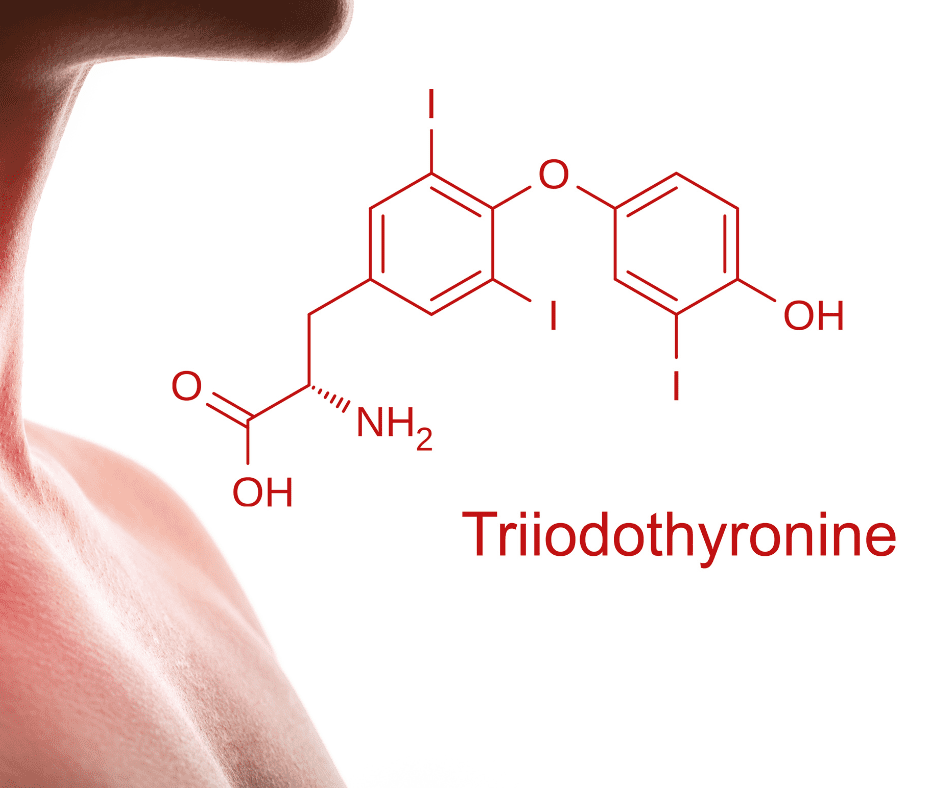
According to Myers (2020), through experimenting with different extracts under the guidance of a skilled clinician, “you can find your sweet spot and what works to make you feel absolutely amazing.”
Beyond extracts, plants have a long history of potentiating thyroid health. Kaliora et al. (2019) recommend herbs such as Coleus forskohlii to boost T4, Siberian ginseng to reduce TSH, and guggul which helps balance the thyroid axis. Ashwagandha, lemon balm and omega 3’s also support healthy hormone signaling and antibody suppression.
Diet and lifestyle measures round out a functional approach. Eliminating goitrogens, sugar, gluten and toxins while increasing nutritious whole foods, restorative movement and hydrotherapy nudges hormone levels through optimizing digestion, reducing inflammation and nurturing adrenal health. Intermittent fasting and protein restriction at night is said to enhance tissue sensitivity to thyroid hormone according to Yance (2020), while exposure to circadian-disrupting blue light after dark should be avoided.
The most empowering treatment for Hashimoto’s is one which reconnects individuals to their physiology. Through functional guidance exploring safe and natural means of balancing and producing thyroid hormone levels over months and years rather than lifelong medication alone, Hashimoto’s patients gain insights into behaviors and interventions that sustain wellness – making lifestyle the best medicine that money can’t buy. With time and commitment to change, the thyroid may return from chronic illness back to a renewed vitality.
Next Steps for Your Thyroid Gland and You
So, you’ve indeed learned quite a bit in this article.
Seriously, 4,000 words later and we have a “decent” foundation of understanding how conventional and other functional medicine practitioners approach Hashimoto’s.
But where do you begin?
Should you start ordering all these tests?
Is it back to Dr. Google PhD, MD?
Before you continue your Hashimoto’s journey, I’d like to give my 2 cents to this discussion.
My take on Hashimoto’s and Functional Medicine
One of the burning questions I always have is “why”?
Functional medicine does a good job of asking a few more layers to “why,” but there is a final layer to it all.
That is, why are you deficient in Vitamin D (despite probably already supplementing it)
Why is your gut microbiome off in the first place?
Why are your nutrients deficient too?
Is it karmic debt? Bad luck?
When you ask deeper questions, you get deeper and more meaningful answers.
What I’ve found over the years is that everything functional medicine is testing for is tied back to your mitochondria.
Sensitive to foods?
It’s because you have a breakdown of energy production from your mitochondria that leads to a poor regulation of your immune system.
Depleted in Vitamin D?
Your mitochondria are actually causing inflammation from malfunctioning and this increases inflammation that actually depletes you of vitamin D.
Why Hashimoto’s?
Recent research suggests mitochondrial dysfunction plays a role in the development and progression of Hashimoto’s thyroiditis. Hashimoto’s patients have been found to have impaired mitochondrial energy production, excessive reactive oxygen species that damage cells, and reduced antioxidant defenses. Lifestyle interventions like calorie restriction, increased intake of polyphenols and healthy fats, and reduced inflammation may help restore mitochondrial health and ease symptoms in Hashimoto’s disease. Improving mitochondrial function may offer a new therapeutic target for managing this autoimmune condition (Czarnecka 2020).

Healing is possible.
With conventional medicine, I would say a rather small proportion of people go into remission for Hashimoto’s.
With functional medicine, this number is much higher but still a long journey of 6 months to 10 years (seriously).
When you understand more about your mitochondria, that’s when we see people make rapid turnarounds in their health in a few weeks to 3 months.
To continue your Hashimoto’s education, go ahead and check out our free masterclass where I dive deeper into how your mitochondria and thyroid are connected.
Here’s the link: https://www.OptimalCircadianHealth.com/class
Thanks for reading and here’s to your health!
Sincerely,
Dylan Petkus, MD

Written By: Dylan Petkus, MD, MPH, MS
Dr. Dylan Petkus is on a mission to help people overcome their health issues like sleep apnea so they are not limited by their condition or trapped by options that don’t provide full resolution.
He earned his Master’s of Science in Physiology at Pennsylvania State University where he was awarded a research fellowship and was a peer-reviewed published author. He went on to earn both his Master’s in Public Health and Medical Degree from the University of Miami Miller School of Medicine. Thereafter, he specialized in Family Medicine to help patients on the front-line of chronic disease.
Having overcome his own health challenges, including sleep apnea, he strives to help empower others to live fuller, healthier lives.
References
- Garber, J.R., Cobin, R.H., Gharib, H., Hennessey, J.V., Klein, I., Mechanick, J.I., Pessah-Pollack, R., Singer, P.A. and Woeber, K.A., 2012. Clinical practice guidelines for hypothyroidism in adults: cosponsored by the American Association of Clinical Endocrinologists and the American Thyroid Association. Endocrine practice: official journal of the American College of Endocrinology and the American Association of Clinical Endocrinologists, 18(6), pp.988-1028. https://pubmed.ncbi.nlm.nih.gov/23246686/
- Kaliora S, Davis SN, Giannopoulou C,Panagiotakos DB, Lionis C, Chrousos GP, et al. Functional Medicine Application in Hashimoto’s Thyroiditis: A Case Report. Medicina. 2019;55(8):463.
- Grasberger E, Bell DS. Established and Emerging Biomarkers for Monitoring and Strategizing Therapeutic Interventions in Hypothyroidism and Hashimoto’s Thyroiditis: A Narrative Review. Diseases. 2019;7(4):61.
- Tomer Y, Huber A. The etiology of autoimmune thyroid disease: a story of genetics and environment. Journal of Autoimmunity. 2009;32(3-4):213-219. https://pubmed.ncbi.nlm.nih.gov/19307103/
- Kharrazian D, Pick D. Transferring Patients from Allopathic to Integrative Medicine for Hashimoto’s Thyroiditis: Lessons Learned From a Cross-Specialty Collaboration. Alternative Therapies in Health and Medicine. 2020 Jan;26 Suppl 1:S18-S26.
- Myers, Amy. “Lab Testing in Functional Medicine.” Amy Myers MD, 2020.
- Pacitti, D., Punchard, N.A & Bhatnagar, D. (2013). Salivary Biomarkers of Endocrine and Metabolic Status. Open Journal of Endocrine and Metabolic Diseases, 03(01) http://dx.doi.org/10.4236/ojemd.2013.31004
- Vojdani, A., & Vojdani, E. (2020). Reaction of thyroid antibodies to cytokines and food antigens in autoimmune thyroid diseases. Endocrine, 67(2), 390–402. https://doi.org/10.1007/s12020-020-02286-6
- Jackson, W., Samanta, A., & Jackson, B. (2019). Breaching the Mucosal Barrier–The Link Between Gut Permeability and Autoimmunity. Cells, 8(8), 925. https://doi.org/10.3390/cells8080925
- Wentz, I. (2017). Hashimoto’s Protocol: A 90-Day Plan for Reversing Thyroid Symptoms and Getting Your Life Back. HarperOne. https://books.google.com/books/about/Hashimoto_s_Protocol.html?id=QmieDAAAQBAJ
- Perrone, C., Benvenga, S., Biagiotti, R., Attanasio, E., Rossi, A., & Vitale, M. (2019). Hashimoto’s Thyroiditis: Lifestyles Interventions to Restore Wellness. Nutrients, 11(10), 2319.
- González-Darder, J.M., González-Villar, A., Botella-Carretero, J.I., Bailador González, E., Bailín-Grande, I., & Pérez-Piñero, S. (2019). Vitamin D levels in patients with Hashimoto’s thyroiditis. Endocrinología, diabetes y nutrición, 66(5), 289–294.
- Guastamacchia, E., Triggiani, V., & Tafaro, E. (2012). Hashimoto’s thyroiditis: L-thyroxine treatment and a possible role of other autoimmune thyroid disorders and vitamin D deficiency. Expert review of endocrinology & metabolism, 7(6), 655–661.
- Westhovens, R., Da Silva, P. C., Wijns, K., De Clerck, L., D’Haese, P., Jardon, O. M.,.. & Verslype, C. (2018). A Nutritional Approach to Hashimoto’s Thyroiditis: A Pilot Study. Medicina, 54(6), 94.
- Czarnecka, A. M., Kukwa, W., & Scislowska-Czarnecka, A. (2020). Hashimoto’s Thyroiditis and Mitochondria: Recent Advances. International journal of molecular sciences, 21(8), 2702. https://pubmed.ncbi.nlm.nih.gov/32282830/


